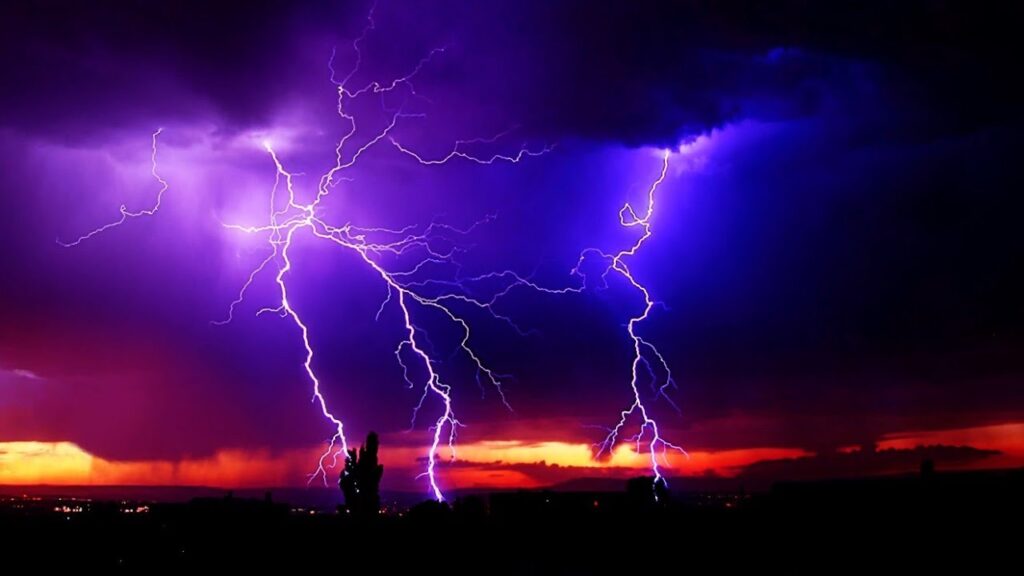Know Dos and Don’ts in case of a Thunderstorm

New Delhi, 10 July 2020: The National Disaster Management Authority (NDMA) has issued Dos and Don’ts in case of a Thunderstorm event.
Before Thunderstorm and Lightning
To prepare for a thunderstorm, you should do the following:
· Do remember that vivid and frequent lightning indicates the probability of a strong thunderstorm.
· To begin preparing, you should build an emergency kit and make a family communications plan.
· Remove dead or rotting trees and branches that could fall and cause injury or damage during a severe thunderstorm.
· Postpone outdoor activities.
· Remember the 30/30 Lightning Safety Rule: Go indoors if, after seeing lightning, you cannot count to 30 before hearing thunder. Stay indoors for 30 minutes after hearing the last clap of thunder.
· Secure outdoor objects that could blow away or cause damage.
· Get inside a home, building, or hard top automobile (not a convertible). Although you may be injured if lightning strikes your car, you are much safer inside a vehicle than outside.
· Remember, rubber-soled shoes and rubber tires provide NO protection from lightning. However, the steel frame of a hard-topped vehicle provides increased protection if you are not touching metal.
· Shutter windows and secure outside doors. If shutters are not available, close window blinds, shades or curtains.
· Unplug any electronic equipment well before the storm arrives.
During Thunderstorms and Lightning
If thunderstorm and lightning are occurring in your area, you should:
· Avoid contact with corded phones and devices including those plugged into electric for recharging. Cordless and wireless phones not connected to wall outlets are OK to use.
· Avoid contact with electrical equipment or cords. Unplug appliances and other electrical items such as computers and turn off air conditioners. Power surges from lightning can cause serious damage.
· Avoid contact with plumbing. Do not wash your hands, do not take a shower, do not wash dishes, and do not do laundry. Plumbing and bathroom fixtures can conduct electricity.
· Stay away from windows and doors, and stay off porches.
· Do not lie on concrete floors and do not lean against concrete walls.
· Avoid natural lightning rods such as a tall, isolated tree in an open area.
· Avoid hilltops, open fields, the beach or a boat on the water.
· Take shelter in a sturdy building. Avoid isolated sheds or other small structures in open areas.
· Avoid contact with anything metal-tractors, farm equipment, motorcycles, and bicycles.
· If you are driving, try to safely exit the roadway and park. Stay in the vehicle until the Strong rain ends. Avoid touching metal or other surfaces that conduct electricity in and outside the vehicle.
After a Thunderstorm or Lightning Strike
If lightning strikes you or someone you know, call for medical assistance as soon as possible. The following are things you should check when you attempt to give aid to a victim of lightning:
·Breathing – if breathing has stopped, begin mouth-to-mouth resuscitation.
·Heartbeat – if the heart has stopped, administer CPR.
·Pulse – if the victim has a pulse and is breathing, look for other possible injuries. Check for burns where the lightning entered and left the body. Also be alert for nervous system damage, broken bones and loss of hearing and eyesight.
After the storm passes remember to:
· Never drive through a flooded roadway. Turn around, don’t drown!
· Stay away from storm-damaged areas to keep from putting yourself at risk from the effects of severe thunderstorms.
· Continue to listen to a local radio and television stations for updated information or instructions, as access to roads or some parts of the community may be blocked.
· Help people who may require special assistance, such as infants, children and the elderly or those with access or functional needs.
· Stay away from downed power lines and report them immediately.
· Watch your animals closely. Keep them under your direct control.








